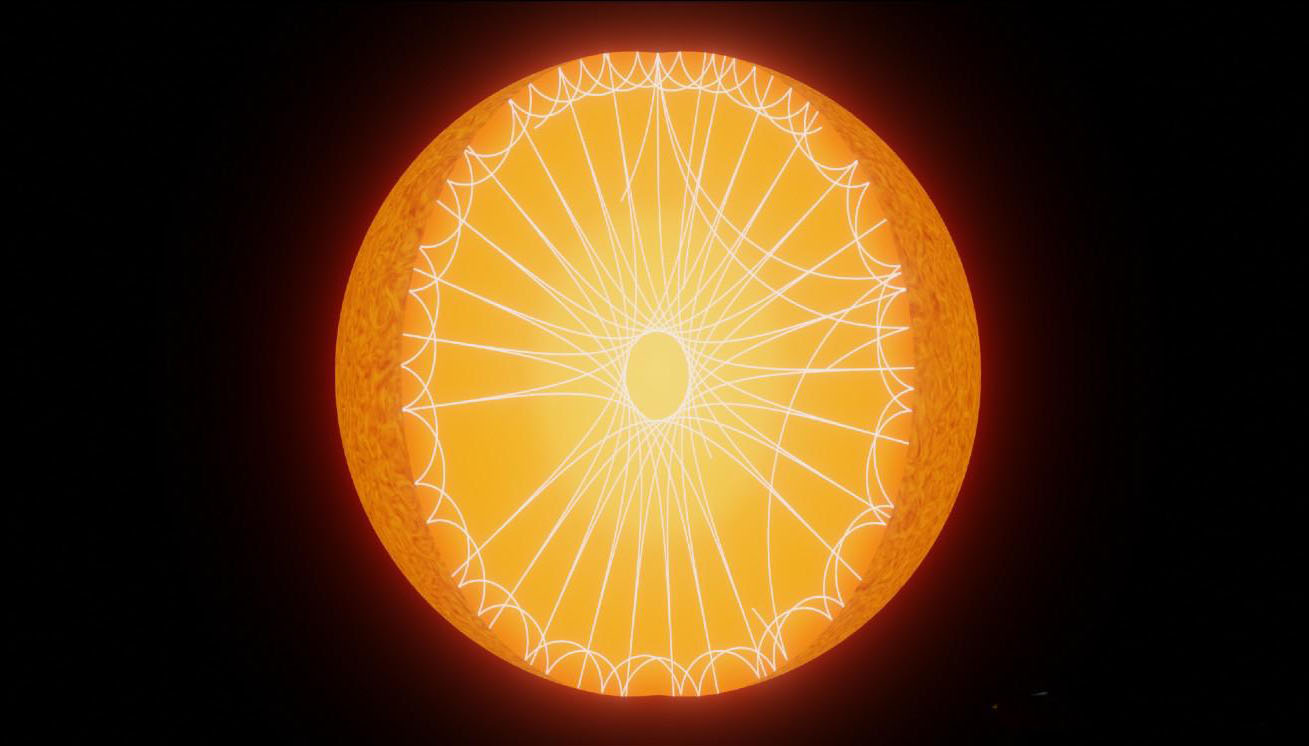| Mar 26, 2024 |
Tiniest 'starquake' ever detected
|
|
(Nanowerk News) An orange dwarf star has yielded the tiniest ‘starquakes’ ever recorded, measured by an international team of scientists.
|
|
Named Epsilon Indi, the star is the smallest and coolest dwarf star yet observed with solar-like oscillations – “starquakes” like those shown by the Sun. These oscillations provide indirect glimpses of stellar interiors – just as earthquakes tell us about Earth's interior – and so are important sources of information about the makeup of the star.
|
|
The measurements were taken by an international team, led by the Institute of Astrophysics and Space Sciences in Portugal, and including researchers from the University of Birmingham. The study is published in Astronomy and Astrophysics Letters ("Expanding the frontiers of cool-dwarf asteroseismology with ESPRESSO: Detection of solar-like oscillations in the K5 dwarf ε Indi").
|
 |
| Artist 's impression of sound waves (p modes), with different frequencies, travelling across the inner layers of a star. (Image: Tania Cunha (Planetário do Porto - Centro Ciência Viva)/Instituto de Astrofísica e Ciências do Espaço)
|
|
The quakes were detected using a technique dubbed asteroseismology, which measures oscillations in stars. Using the ESPRESSO spectrograph, mounted at the European Southern Observatory’s (ESO) Very Large Telescope (VLT), the team was able to record the oscillations with unprecedented precision.
|
|
Lead author Tiago Campante, of the Institute of Astrophysics and Space Sciences at the University of Porto, said: “The extreme precision level of these observations is an outstanding technological achievement. Importantly, this detection conclusively shows that precise asteroseismology is possible down to cool dwarfs with surface temperatures as low as 4200 degrees Celsius, about 1000 degrees cooler than the Sun's surface, effectively opening up a new domain in observational astrophysics.”
|
|
Orange dwarf stars have recently become a focus in the search for habitable planets and extraterrestrial life. Professor Bill Chaplin, Head of the School of Physics & Astronomy at Birmingham, and a member of the team, said: “The mismatch between the predicted and observed sizes of these stars has implications for finding planets around them. If we use the most successful planet-finding technique – the so-called transit method – we get the size of the planet relative to the size of the star; if we don’t size-up the star correctly, the same will be true of any small planet we have found.” The detection of oscillations will help to understand and minimise these discrepancies, and improve the theoretical models of stars.
|
|
The detection of starquakes in Epsilon Indi will now inform plans to use the upcoming European Space Agency’s (ESA) PLATO Mission, scheduled to be launched in 2026, to detect oscillations in many more orange dwarfs. PLATO will also be searching for planets around these stars. Birmingham has responsibility for the design and delivery of much of the asteroseismology pipeline for PLATO, the results of which will be used by thousands of researchers around the world.
|

